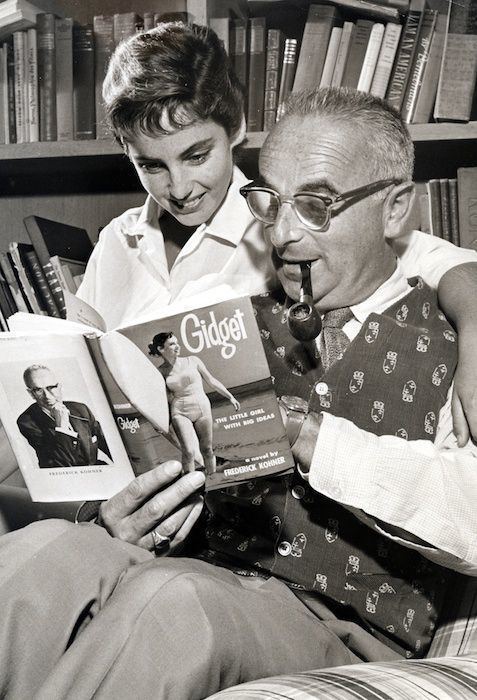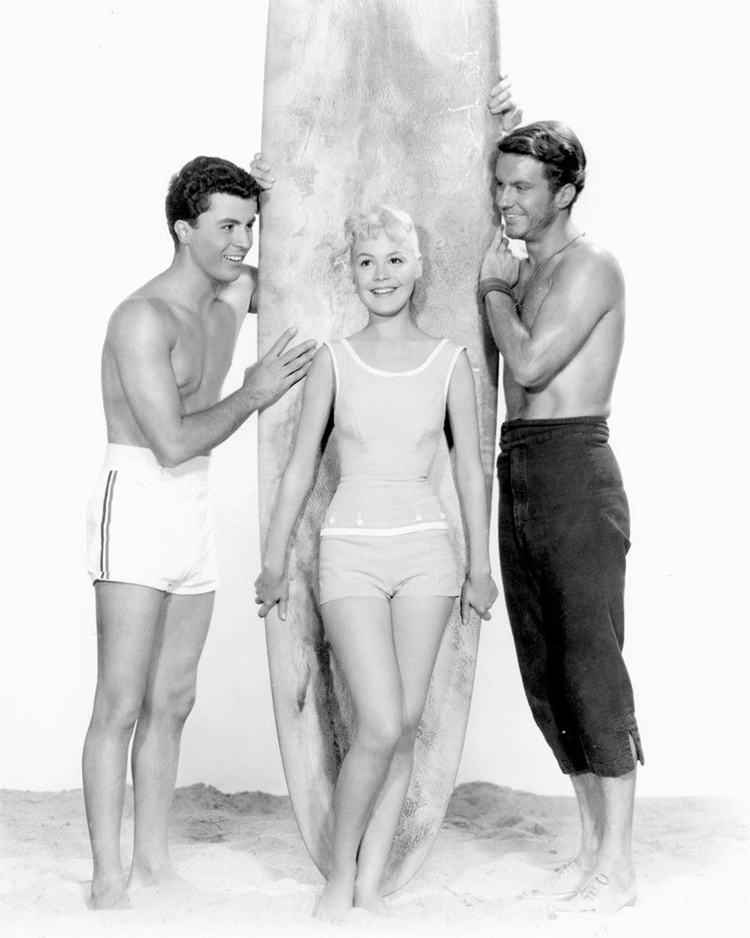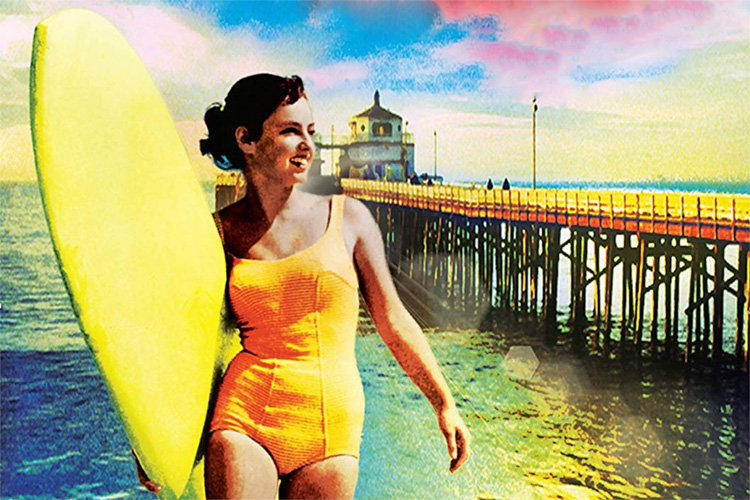"Gidget" is the linguistic blend of the words "girl" and "midget."
But the name means much more than that - it's the movie that changed the course of surfing and made it mainstream.
The fictional character was inspired by Frederick Kohner's teenage daughter, Kathy Kohner, who embraced the surfing lifestyle on the sands of Malibu.
Kathy was born on January 19, 1941, in Los Angeles and raised in Brentwood.
She was only five feet tall, weighed 95 pounds, rode her first wave at the age of 15 on June 24, 1956, and was obsessed with surfing and beach life.
One day in Malibu, Terry "Tubesteak" Tracy shouted out: "See you around, Gidget!" The nickname Gidget stuck. Forever.
Initially, Kohner traded peanut butter sandwiches she made in her parent's kitchen for the use of surfboards lying around Tracy's beach shack.
Malibu's favorite mascot soon became an accomplished and well-respected surfer. She was one of the few girls riding waves at the time and kept all her adventures in her diary.
"Some people have Alcoholics Anonymous, Starbucks, church. (...) I had Malibu," Kathy Kohner later said.
The real-life "Gidget" surfed with legends like Miki Dora, Tom Morey, Dewey Weber, Kemp Amberg, and Mickey Munoz.
But, there was a surprise in the making that would have a significant impact on the future of the sport.
Kathy's father, Frederick Kohner, was a Czechoslovakian Jew who worked as a screenwriter for the German film industry until 1933.
When the Nazi regime started removing Jewish credits from films, Frederick Kohner decided it was time to move to Hollywood and started working for Columbia Pictures.

"Gidget": The Book That Changed the Course of Surfing
After a day of surfing, Kathy would arrive home and tell her father about the friends, the rides, and the stories and experiences she had witnessed and lived at the beach.
The surf culture, with its surfer slang and laid-back attitude, fascinated and inspired Kohner to write a novel titled "Gidget (The Little Girl with Big Ideas)," her daughter's nickname in Malibu.
The book published by G. P. Putnam's Sons ended up selling over half a million copies.
Two weeks after its release, Frederick Kohner sold the novel rights to Columbia Pictures for $50,000, with five percent going to Kathy.
The American film studio made three movies, all directed by Paul Wendkos - "Gidget" (1959), "Gidget Goes Hawaiian" (1961), and "Gidget Goes to Rome" (1963).
In the novels, the star's name was Franziska Hofer; in the movies, she was Frances Elizabeth Lawrence. But they were all Gidget.
The 1959 movie "Gidget" was shot at Leo Carrillo State Park in Southern California and released on April 10, 1959.
Shortly after hitting the theaters, it became a hit among the American youth audience and rapidly brought surfing into the mainstream.
The film tells the story of a 16-year-old teenage girl - Frances Lawrence (Sandra Dee) - who meets and falls in love with Moondoggie (James Darren), a good-looking surfer.
Mickey Muñoz doubled for Sandra Dree in the surf. He wore a blond wig and bikini in the waves for the cameras.

The Gidget Effect
The movie, directed by Paul Wendkos, was the first of many flicks that followed and featured surfers and surfing. It even boosted the creation of surf music as a subgenre.
There were subsequent books ("The Affairs of Gidget," "Gidget in Love," "Gidget Goes Parisienne," "Gidget Goes New York" ), television series ("Gidget," "The New Gidget"), and telefilms ("Gidget Grows Up," "Gidget Gets Married," "Gidget's Summer Reunion").
American actress Sally Field made the character even more popular when the "Gidget" TV series (1965-1966) was re-aired in 1983.
The legendary surfer girl later inspired songs by The Brunettes ("Too Big for Gidget") and Suburban Lawns ("Gidget Goes to Hell) and was mentioned, referenced, and quoted in several movies, books, and animated series.
Gidget Gein, the co-founder of the American rock band Marilyn Manson, took his stage name from serial killer Ed Gein and the movie character Gidget.
Kathy Kohner, who has been inducted into Huntington Beach's Surfing Walk of Fame, married Marvin Zuckerman. The couple had two children.
The original "Gidget" is responsible for bringing surfing into popular culture and inspiring generations of female surfers.
It sparked new businesses and brands and boosted sales of hundreds of companies that used the universe of "Gidget" to promote themselves on television, radio, and print media.
Simultaneously, the explosion of surfing in California in the 1960s and the rest of the world changed the perception and image mainstream consumers had of surfers and the sport.
"I'm proud of what my dad did, and I carried the legacy on. Surfing means to me no cell phones, longboards, freedom, paddle. It clears the mind," Kathy Kohner Zuckerman said in 2014.
The life story of Kathy Kohner has been documented in "Accidental Icon: The Real Gidget Story."
